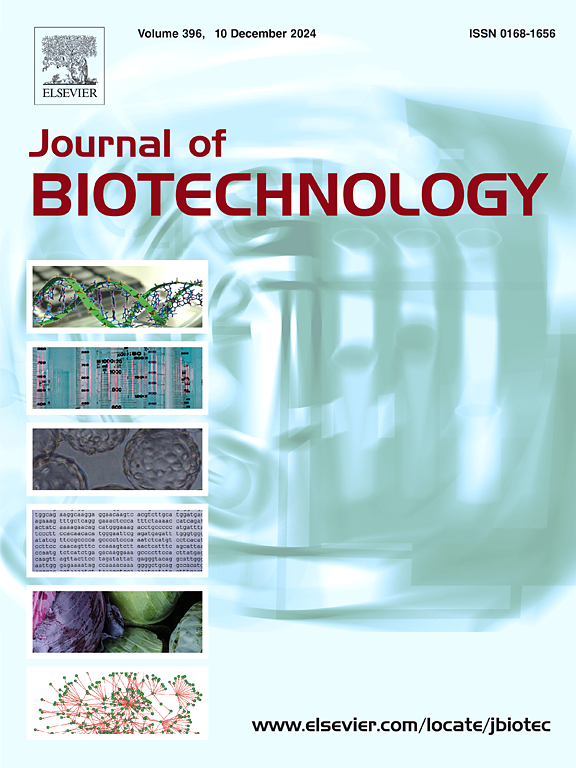葡萄球菌蛋白A的诸多优点:从N端到C端的旅程
IF 3.9
2区 生物学
Q2 BIOTECHNOLOGY & APPLIED MICROBIOLOGY
引用次数: 0
摘要
本文综述了研究最充分的细菌蛋白之一,即金黄色葡萄球菌的免疫球蛋白结合葡萄球菌蛋白A (SpA)的历史发展和广泛应用。SpA操纵子的每个片段,从5 ‘启动子区和信号肽到3 ’细胞壁锚定区,已被开发用于免疫学和生物技术等领域的各种创新应用。我们提供了对生命科学研究产生重大影响的选定应用和概念的概述,其中一些也导致了重大的商业影响。20世纪80年代,在大肠杆菌中利用SpA启动子和信号序列重组生产各种蛋白质,使产物分泌到培养基中,从而简化了产物的回收。SpA的5个同源igg结合结构域在20世纪80年代末获得了极大的兴趣,主要是由于单克隆抗体(mab)用于治疗用途的兴起,促使对有效亲和力配体的需求不断增长,以促进其纯化。多年来,人们对这些igg结合结构域进行了广泛的研究,并重新设计以结合抗体以外的蛋白质,从而在20世纪90年代中期发展了粘附体亲和蛋白技术。今天,在后期临床试验中,作为各种适应症的潜在蛋白质治疗药物,粘附体分子正在被研究。最后,SpA的细胞壁锚定区启发了肉葡萄球菌表面显示系统的开发,该系统已成为组合蛋白工程中具有大型肽,抗体和粘附体文库的技术平台。本文章由计算机程序翻译,如有差异,请以英文原文为准。
The many virtues of staphylococcal protein A: A journey from N to C terminus
This review outlines the historical development and versatile applications of one of the most well-studied bacterial proteins, namely the immunoglobulin (Ig)-binding staphylococcal protein A (SpA) of Staphylococcus aureus. Each segment of the SpA operon, from the 5’ promoter region and signal peptide to the 3’ cell wall anchoring region, has been exploited for various innovative applications in areas such as immunology and biotechnology. We provide an overview of selected applications and concepts that have had a significant impact on life science research, and some that have also led to significant commercial implications. In the 1980s, the SpA promoter and signal sequence were utilized in Escherichia coli for recombinant production of various proteins, yielding product secretion to the culture medium and thereby simplifying product recovery. The five homologous Ig-binding domains of SpA gained tremendous interest in the late 1980s, largely due to the rise of monoclonal antibodies (mAbs) for therapeutic use, prompting a growing demand for effective affinity ligands to facilitate their purification. Over the years, these Ig-binding domains have been extensively investigated and re-engineered to bind proteins other than antibodies, leading in the mid-1990s to the development of the affibody affinity protein technology. Today, affibody molecules are being investigated in late-stage clinical trials as potential protein therapeutics for various indications. Finally, the cell wall anchoring regions of SpA inspired the development of a surface display system for Staphylococcus carnosus, which has emerged as a technology platform in combinatorial protein engineering for work with large peptide, antibody and affibody libraries.
求助全文
通过发布文献求助,成功后即可免费获取论文全文。
去求助
来源期刊

Journal of biotechnology
工程技术-生物工程与应用微生物
CiteScore
8.90
自引率
2.40%
发文量
190
审稿时长
45 days
期刊介绍:
The Journal of Biotechnology has an open access mirror journal, the Journal of Biotechnology: X, sharing the same aims and scope, editorial team, submission system and rigorous peer review.
The Journal provides a medium for the rapid publication of both full-length articles and short communications on novel and innovative aspects of biotechnology. The Journal will accept papers ranging from genetic or molecular biological positions to those covering biochemical, chemical or bioprocess engineering aspects as well as computer application of new software concepts, provided that in each case the material is directly relevant to biotechnological systems. Papers presenting information of a multidisciplinary nature that would not be suitable for publication in a journal devoted to a single discipline, are particularly welcome.
 求助内容:
求助内容: 应助结果提醒方式:
应助结果提醒方式:


